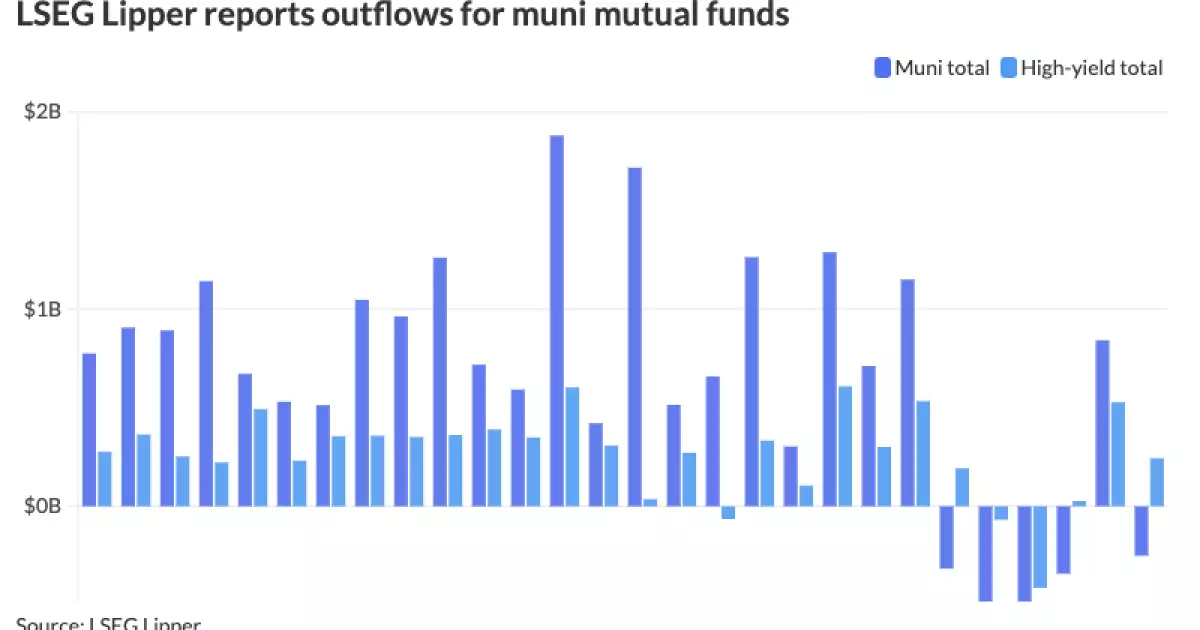As the financial landscape continues to evolve, investors and market analysts are closely watching the municipal bond market. Recent developments indicate a noteworthy uptick in activity, largely driven by an increase in supply and fluctuating yields. This article will delve into the critical factors impacting municipal bonds, dissect trends observed in the marketplace, and examine the ramifications for both issuers and investors.
The municipal bond market experienced a recent uptick in activity, signaling a potential shift in investor sentiment. Underlying this shift is the announcement of a significant deal by the Triborough Bridge and Tunnel Authority, which successfully upsized its bond offering to a robust $1.6 billion. This influx of capital is expected to sustain municipal projects and infrastructure improvements, further reinforcing the necessity of municipal bonds in broader economic development.
Simultaneously, the municipal mutual funds witnessed detrimental outflows, an indicator that investors may be recalibrating their portfolios amid changing market conditions. It is worth mentioning that this volatility was further compounded by a decrease in U.S. Treasury yields, which generally influences bond issuer performance. Declining Treasury rates typically serve as a signal for municipal bonds to gain traction, leading to modest yield shifts that might attract buyers looking for relative value.
The yield ratios for municipal bonds have demonstrated a notable pattern. As of the most recent reports, the two-year municipal to U.S. Treasury ratio stood at 67%, with similar readings for the five-year and notable expirations within the ten-year and thirty-year ranges. These ratios highlight the prevailing pricing environment and indicate that municipal bonds retain their appeal relative to their taxable counterparts.
Kim Olsan from NewSquare Capital emphasized that while municipal bonds have seen a minor response to favorable Treasury sessions, they have yet to match the significant rebound observed in taxable bonds. This illustrates the delicate balance investors must maintain, opting for quality credits amid competitive yield landscapes. The influx of bids across various maturities suggests that buyers are beginning to recognize opportunities presented by higher yield ranges.
Investors’ actions over recent weeks reveal broader trends, including selective interest in short maturities and two-way capital flows along the curve. The fact that all maturity ranges recorded robust customer buying suggests a constructive outlook among investors despite earlier apprehensions. In addition, the elevated levels of bond purchases reflect a cognizance regarding potential risks associated with interest rate movements, which could dramatically alter the investment landscape.
Notably, specific credits, primarily those connected to Los Angeles, exhibited wider spreads—a phenomenon often resulting from credit rating adjustments. In a market where credit ratings are highly scrutinized, such movements can lead to increased volatility. This serves as a crucial reminder for investors: understanding underlying credit fundamentals is essential when navigating diverse municipal bonds.
In the primary market, institutional pricing of major bond issues continues to attract interest from a diverse array of investors. The Triborough Bridge and Tunnel Authority’s upsized bond offering includes a varied spectrum of maturities, each reflecting the nuances of current market conditions. The reduced pricing of several maturities underscores investor responsiveness to market cues, as various yields align closely with long-term financial objectives.
The various bond issues from institutions like the University of Colorado and Yale University also serve to diversify the investment landscape, introducing credits with lower defaults rates—an essential factor in municipal investing. Investors should note that despite fluctuations, these institutions’ bonds represent a safer haven, particularly under current volatile conditions.
As the municipal bond market navigates through these recent episodes of volatility, investors must adopt a strategic approach to maximize returns while mitigating risks. The dynamics observed in the ongoing marketplace necessitate a thorough analysis of credit quality, yield performance, and market signals. While some investors may opt for the higher yields offered by new issuances, informed capital allocation decisions should be grounded in a comprehensive understanding of market trends and economic indicators.
Evolving patterns in demand and supply dynamics, combined with the performance of Treasury yields, warrant the continuous monitoring of the municipal bond space. Long-term investors might find value in the resilience of quality credits, while those with more dynamic strategies may benefit from identifying adaptive trading opportunities. Such measured approaches will be critical in a market poised on the edge of substantial shifts.

